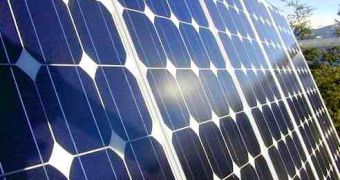Recent scientific studies have discovered that a byproduct of the solar industry, a gas called Nitrogen Trifluoride (NF3), has 17,000 times the potential of carbon dioxide, in trapping heat inside Earth's atmosphere. The worst part about this is that there are currently no regulations to limit or prevent the use of this gas in solar panel manufacturing processes. With NF3 amounts almost doubling every year, this gas could soon pose a bigger problem for the environment than carbon currently does.
In addition, the same surveys, published in the Geophysical Research Letters, reveal that existing NF3 levels are as much as 4 times higher than expected, and that emissions are at about 16 percent of everything solar factories emit in the air. This gas is part of a compound used by the semiconductor industry to clean the rooms where essential solar panel components are made.
Environmental experts draw attention to the fact that a severe lack of regulations in this area means that companies are not required to keep any kind of records of their NF3 usage. Therefore, their impact on the climate cannot be fully comprehended and the effects NF3 has on the upper layers of the atmosphere are still only evaluated via assumptions, as the real levels are, as of yet, unknown.
On the bright side, there already is a replacement for this gas, a substance called fluorine, which yields the same effects and can be used in most processes nitrogen trifluoride is currently involved in. However, the costs of this substance place it out of reach for small enterprises, which already have a hard time staying in business.
The fact of the matter is that, unless laws to enforce bans on this greenhouse gas are set in place quickly, the climate could soon have to deal with not two, but three dangerous gases – carbon, ozone and NF3. This could further upset the balance of gases in our atmosphere, leading to catastrophic effects, like more species disappearing, increased tropical storm activities and more.

 14 DAY TRIAL //
14 DAY TRIAL //